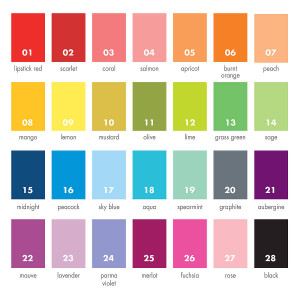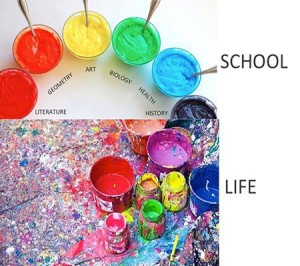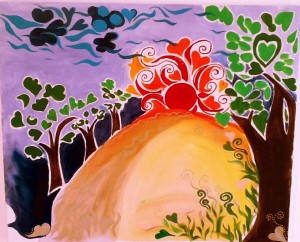
The Colour of Words – Vladimira Chalyova
What are you learning when learning new vocabulary? Is it a word itself that matters most? Is it “mastering” the word and keeping it firm in our memory? And so I ask what is it you teach when you teach new vocabulary?
“Writers fish for the right words like fishermen fish for, um, whatever those aquatic creatures with fins and gills are called.” – Jarod Kintz
I was thinking what it is that makes each word so powerful and distinctive from others, yet similar and sometimes hard to remember or distinguish as each is “made from the same dough” – letters. Words are like people, the same yet different, each with a unique story but separated only by six steps from each other, simple to grasp and hard to define.
But being more serious about words, here are some of the features we learn as we learn new vocabulary (or we should learn):
- Meaning – of course, often overestimated in classes. I call it “the first impression of the word”. And you know we were taught not to judge the book by its cover.
- Function and use – you know, this stuff about whether it is a noun, verb or adjective and all the things related to it.
- Word formation – so if you know it is a noun, how does the verb look like that conveys the same information? What is the root of the word and where can I take it using all kinds of suffixes or prefixes?
- Context – how and where is it used most often, and why? Who, what group of people uses it? And what about phrases and idioms that are formed out of that?
- Associations – hard to define and easy to argue about as this one is very personal, related to your own very specific experience, environment and perspective of it.
I would like to share some activities that were built around these principles and still offer space to adapt, simplify, or enrich. They are all built around the topic of colours but taken one step further and beyond the elementary level to see there is always a lot more to discover than we may think when we first encounter the word.
- A-Z race – ask your students to write down the letters of the alphabet and give them a colour. See how many things they know that are of this specific colour. Discuss, compare, take further!
- Guess my colour – at home, prepare pieces of papers with a colour sample and a name of the colour, see picture for inspiration. Each student gets a piece secretly. Let them mingle and try to find out what the name of the colour, the other person has, is. They can ask questions, give hints, lead each other or just nod, as you wish. Again, make them contemplate and discuss the colours and take them one step further inventing the names for the colours they like or find mundane in every day life.
- Poem factory – I start this lesson by saying that by the end of it, we all will be poets. It always gets them! I tell them about haiku poetry and if possible take them out. The aim is to notice the little piece of the world in a new perspective and redefine its colours.
- Imagine – take on the colored glasses and see the world around! Give your students a set of verbs (or nouns/songs/dances/adjectives, list here is basically endless) and ask them to match each with one colour. Discuss, compare, take it further!
- What word are you today and what colour is it? – this last one is pretty much self explanatory. You can use it as a warm-up, fill in activity or even when you need to calm down your students (especially if you also give them a crayon to choose and use). It is highly personal and as an attentive teacher, you can get lots of teaching material for your unplugged lesson from it.
You may have noticed that each of these activities is very flexible and with an outcome that you can’t predict in any lesson plan but one that can easily lead to lovely discussions, discoveries, and full of potential for learning a lot in a context.
Challenge 1: how many flowers do you know that are blue? Can you name at least three? What do their names represent and what can we learn about them from their names?
Challenge 2: how many words do you know that are green and contain letters S and A?
Challenge 3: what colour is your name? Can you explain?
Enjoy words as you enjoy the world around and never separate those two. And if you need some inspiration, look for more colours!





Hi Vladimira,
Thanks for some great motivating tips on Vocabulary learning.